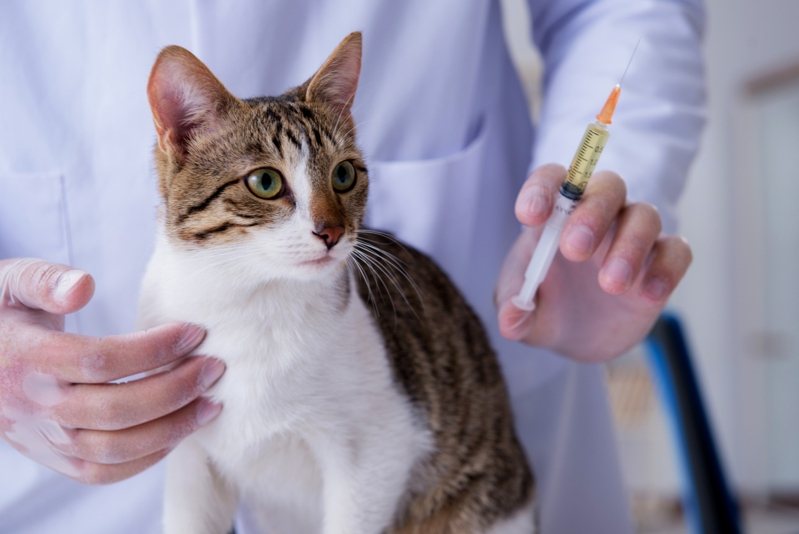Introduction:
As a pet parent, it can be concerning when you notice your dog scratching their ears excessively or shaking their head. While dogs might occasionally scratch their ears, persistent ear scratching could be a sign of an underlying issue, such as an ear infection. Ear infections in dogs are common and can be caused by a variety of factors, ranging from allergies to bacteria, yeast infections, or parasites.
In this article, we will explore the possible causes of ear scratching in dogs, the signs to watch out for, and what you can do to help your dog if they are suffering from an ear infection. By understanding the symptoms and seeking timely veterinary care, you can ensure your dog’s ears stay healthy and comfortable.
1. Why Do Dogs Scratch Their Ears?
Before jumping to conclusions about an ear infection, it’s important to understand that there are various reasons why your dog might scratch or bother their ears. While ear infections are a common cause, other issues can lead to ear discomfort. Let’s take a look at the most common causes:
a. Ear Infections
Ear infections are the most frequent reason for dogs to scratch their ears. These infections can occur in the outer, middle, or inner ear, but the most common type is otitis externa, an infection of the outer ear canal. Bacteria, yeast, and fungi can cause these infections, and they are often accompanied by inflammation.
- Symptoms: Excessive scratching, head shaking, a foul odor coming from the ear, redness, swelling, discharge (which may be yellow, brown, or bloody), and sensitivity when touching the ear.
b. Ear Mites
Ear mites are tiny parasites that can infest your dog’s ears, causing intense itching and irritation. They are most common in puppies and older dogs but can affect any dog. Ear mites are highly contagious and often spread in environments with multiple pets.
- Symptoms: Scratching, head shaking, black or dark brown discharge, and a strong odor. Ear mites are often associated with a lot of itching, especially at night.
c. Allergies
Dogs can develop allergies to certain foods, environmental factors (such as pollen or dust mites), or substances that come into contact with their skin (like certain shampoos or flea treatments). Allergies often affect the skin and ears, leading to itching and scratching.
- Symptoms: Itchy ears, red or inflamed skin around the ears, paw licking, and general discomfort. In some cases, allergies can also cause watery eyes, sneezing, or gastrointestinal issues.
d. Foreign Objects
Sometimes, a dog may get something stuck in their ear, like a seed, grass, or debris from outdoor play. This can cause irritation and make your dog scratch their ears in an attempt to relieve the discomfort.
- Symptoms: Scratching, pawing at the ear, head shaking, and possible signs of pain when touching the ear. If the object is still lodged in the ear, you may notice an abnormal tilt to the head.
e. Excessive Wax Buildup
Dogs naturally produce earwax, but excessive wax can accumulate, blocking the ear canal and causing discomfort. This buildup can lead to itching and, in some cases, a secondary infection if left untreated.
- Symptoms: Scratching, head shaking, and dark, waxy discharge. In some cases, a yellow or brown discharge may also be present.
f. Dry Skin or Dermatitis
Dry skin or dermatitis can affect the ears, causing itching and discomfort. This can be due to environmental factors, seasonal changes, or underlying skin conditions such as seborrhea.
- Symptoms: Redness, flaking skin, dryness around the ear area, and excessive scratching or pawing.
2. How to Tell If Your Dog Has an Ear Infection
If your dog is persistently scratching their ears or shaking their head, it may be a sign of an ear infection. Here are some additional symptoms that indicate your dog may be dealing with an ear infection:
a. Odor
A strong, foul odor emanating from your dog’s ears is one of the most common signs of an ear infection. The odor is often caused by the buildup of bacteria, yeast, or wax in the ear canal.
b. Discharge
Discharge from the ear is a key indicator of an infection. The discharge may be brown, yellow, or bloody, and it often has an unpleasant smell. If the discharge is thick or crusty, it may be a sign of a bacterial or yeast infection.
c. Redness and Swelling
The inside of the ear may appear red and swollen if an infection is present. You may notice that your dog’s ears look inflamed or irritated, and the skin may feel warmer than usual.
d. Pain or Sensitivity
If your dog seems to be in pain when you touch their ears or if they avoid having their ears handled, it could indicate an infection. Dogs with ear infections may also be sensitive when you try to clean their ears.
e. Head Shaking and Tilting
Frequent head shaking or tilting to one side could indicate that your dog is experiencing pain or discomfort in the ear. In severe cases, the ear canal may be so painful that your dog holds their head at an odd angle to try to relieve the pressure.
f. Changes in Behavior
If your dog seems more irritable, less active, or exhibits changes in behavior (e.g., difficulty sleeping, loss of appetite), an ear infection may be the cause. Dogs can become agitated and anxious when they are in pain, so these behavioral changes are often associated with ear discomfort.

3. How to Address an Ear Infection in Dogs
If you suspect that your dog may have an ear infection, it’s important to take them to the veterinarian as soon as possible. Ear infections can worsen quickly and may lead to permanent damage if left untreated. Here’s what to expect and how to help your dog:
a. Veterinary Diagnosis
Your veterinarian will conduct a thorough examination of your dog’s ears, including using an otoscope to look inside the ear canal. They may take a sample of the ear discharge to check for bacteria, yeast, or parasites under a microscope. The vet will also ask questions about your dog’s symptoms and medical history to determine the cause of the infection.
b. Treatment
Treatment for ear infections depends on the underlying cause. The vet may recommend one or more of the following:
- Topical Ear Medications: Antibiotic or antifungal ear drops are commonly prescribed to treat bacterial or yeast infections. Your vet will guide you on how to apply the medication properly.
- Oral Medications: In more severe cases, oral antibiotics or anti-inflammatory drugs may be prescribed to help reduce inflammation and treat the infection.
- Ear Cleaning: Regular ear cleaning may be necessary to remove excess wax, debris, or infection-causing organisms. Your vet will show you how to clean your dog’s ears safely at home.
- Allergy Management: If allergies are causing the ear infection, your vet may recommend antihistamines or other treatments to address the underlying allergic reaction.
- Parasite Treatment: If ear mites are the cause, the vet will prescribe specific medications to eliminate the parasites.
c. Follow-Up Care
In many cases, ear infections require follow-up visits to ensure that the infection has cleared up and that your dog’s ears remain healthy. Your vet may recommend a follow-up check to reexamine the ears and adjust the treatment plan if necessary.
4. How to Prevent Ear Infections in Dogs
Preventing ear infections in dogs is often possible with proper care. Here are some tips to help keep your dog’s ears healthy:
a. Regular Ear Cleaning
Regular ear cleaning is important for dogs, especially those with floppy ears or those prone to ear infections. Use a vet-approved ear cleaner to gently remove dirt, wax, and debris from your dog’s ears. Do not use cotton swabs, as they can push debris further into the ear canal.
b. Dry Ears After Swimming or Bathing
If your dog enjoys swimming or has a bath, make sure to dry their ears thoroughly afterward to prevent moisture from lingering in the ear canal. Moisture can create an ideal environment for bacteria and yeast to thrive.
c. Monitor for Allergies
If your dog is prone to allergies, try to identify and avoid potential allergens. Food allergies, pollen, or environmental irritants can contribute to ear problems. Your vet can help you manage your dog’s allergies with dietary changes or medications.
d. Flea and Parasite Control
Regular flea and parasite control will help reduce the risk of ear mites and other parasites that can lead to ear infections. Make sure your dog is on an appropriate parasite prevention plan as recommended by your veterinarian.
5. Conclusion: Taking Action for Your Dog’s Ear Health
If your dog is scratching their ears excessively or showing other signs of ear discomfort, it’s essential to address the issue promptly to prevent further complications. Ear infections are common but treatable, and with the right care, your dog can recover and enjoy a healthy, comfortable life.
Always consult your veterinarian if you suspect an ear infection or if your dog’s symptoms persist. Early diagnosis and treatment are key to resolving ear infections and ensuring your pet’s well-being. By taking preventative steps and being proactive about your dog’s ear health, you can help them avoid future issues and keep their ears clean and comfortable.























































